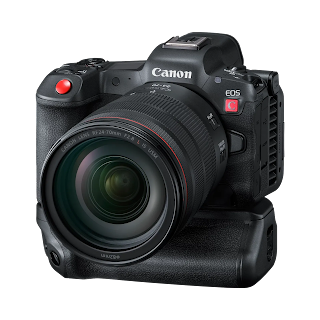Firmware version 1.0.3.1 for the EOS R5 C incorporates the following enhancements:
1. Improves the image quality of Canon Log 3 when shooting in XF-AVC or MP4 formats.
Precautions
• Please use an SD/SDHC/SDXC memory card that is 512MB or greater to perform the firmware update.
• Firmware update must be performed in VIDEO mode.
• After the firmware update has been performed, the camera's menu settings will be reset. It is recommended that, prior to starting update operations, users save their menu settings as settings data to an SD card, separate from the one that will be used to carry out the update. This saved data can be loaded into the camera and the settings can be changed after the update has been completed. For further information on this, please refer to the section in the unit's Instruction Manual titled "Saving and Loading Camera Settings".
• The downloaded folder contains the firmware (file name: VSD6.FIM / file size: 91,648,320 byte), and instructions on the firmware update procedures (a PDF file in five languages: Japanese, English, French, Spanish and Simplified Chinese). Prior to starting the firmware update operations, please be sure to carefully review and confirm your understanding of these instructions.
1. Improves the image quality of Canon Log 3 when shooting in XF-AVC or MP4 formats.
Precautions
• Please use an SD/SDHC/SDXC memory card that is 512MB or greater to perform the firmware update.
• Firmware update must be performed in VIDEO mode.
• After the firmware update has been performed, the camera's menu settings will be reset. It is recommended that, prior to starting update operations, users save their menu settings as settings data to an SD card, separate from the one that will be used to carry out the update. This saved data can be loaded into the camera and the settings can be changed after the update has been completed. For further information on this, please refer to the section in the unit's Instruction Manual titled "Saving and Loading Camera Settings".
• The downloaded folder contains the firmware (file name: VSD6.FIM / file size: 91,648,320 byte), and instructions on the firmware update procedures (a PDF file in five languages: Japanese, English, French, Spanish and Simplified Chinese). Prior to starting the firmware update operations, please be sure to carefully review and confirm your understanding of these instructions.
